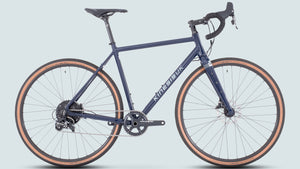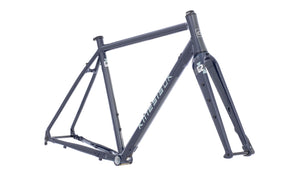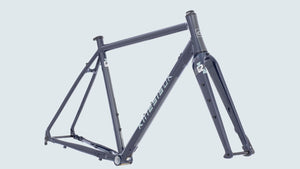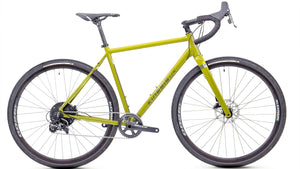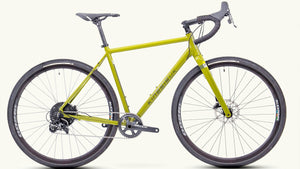Whilst my Specialized Diverge had been my trusty steed for several years, and taken me 12,000km from Vancouver to Panama City, she was pretty battered. I wasn’t sure how well she would cope with the TCR, and she would need a lot of work done. I reached out to Kinesis UK to ask for help on the bike front. I knew Kinesis had previously sponsored the race, and that they were based in Partridge Green – only 30km from Brighton. Plus they made great bikes. I emailed them, explaining my story, and asked if they could help me. I was later invited to come to Kinesis HQ where I met the team, and spoke to Mark Noble, head of marketing. Kinesis were able to help me, and gave me a bike to complete the TCR on – the Kinesis G2. I was able to try out the medium size and it was perfect.
I made a few modifications to my bike before the race. I switched out the saddle to a Specialized Power Comp. I also made the decision to go tubeless. I reached out to Hunt Wheels, another local company based in Partridge Green, who gave me a set of Superdura Dynamo wheels, and bought a pair of Continental GP 5000 35mm tyres. Nathan who works in the Kinesis workshop fitted the new wheels and tyres. The dynamo hub at the front was great and I would recommend a dynamo hub for anyone considering ultra-distance racing. I borrowed a cable off a friend, Dan – the guy who did TCR no.9, so I could actually use the dynamo! He had created a cable that plugged onto the dynamo hub and had a USB port at the other end, so I could charge up my Garmin, my lights and my power bank. It was great having this, as I didn’t have to worry about keeping my stuff charged up. The other alteration I made was changing the cassette so I had better gearing for going up the hills! Despite this I still had to walk up plenty during the race – I think that no matter how good your gearing is, you always wish you had a lower one going up the steep hills!
A few days before setting off to France for the race, I visited Kinesis HQ again, and spent a morning checking over my bike with Nathan in the workshop. He replaced the bottom bracket, and bled the brakes, in addition to changing the brake pads. We also changed the gear cable and indexed the gears, and put a new chain on. Plus gave it a really good clean!
The other big decision was my pedal choice – I was one of the only people to ride TCR with flat pedals. I used the DMR Flat4 pedals and paired these with some Adidas 5-10 pro shoes. It was one of the best decisions I made, and I am so glad I did it with flat pedals. I toyed with the idea of clipless, so I got some SPD cleats, and shoes to go with them, and tried these out. But I just feel way more comfortable and relaxed when I’m not clipped in. I think the fact that quite a lot of the route was gravel, and there was some very rough and quite technical terrain, solidified my decision to go with flat pedals. If I did it again, I’d do it with flat pedals. It made the hike a bike sections much easier! Flat pedals win medals – I feel like I’ve proved this now!
Another great aspect about getting a bursary place, was that we were given kit by Apidura. We were put in touch with Josie Alchin at Apidura, who helped us choose our kit. I went for the Expedition Series 1L toptube bag, 4.5L frame bag, 14L handlebar bag with 4.5L accessory pocket and 14L saddle pack. I opted for the Expedition Series, with quite a large total carrying capacity as I thought this would serve me well in the long run in addition to being more than sufficient for the race. I hope to do more bike packing in the future so this set-up is perfect. The Apidura bags are great. We got them several months before the race, so I made sure I set my bike up how I wanted it for the race to get used to it like that. I fine-tuned where I wanted everything within the bags, so I knew where everything was.
A last-minute decision from me was to get a race hydration vest, and I am so glad I did this. I don’t know what I would have done without it. I only had 2L water capacity on my bike, but this was doubled with the 2L hydration vest. The vest also had pockets on each side, that I was able to put cans of iced coffee or Coca-Cola in, further increasing my fluid-carrying capacity. It’s incredible how much water you need when you’re cycling in 40-degree heat!













